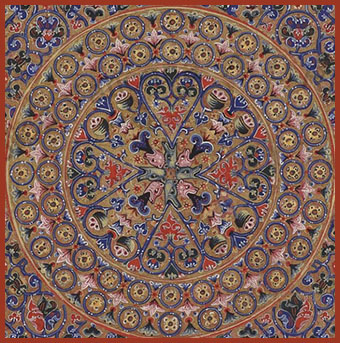 There were two editions of this manuscript, one is in Paris and the other is in the Vatican. All of these images are from the version in the Vatican. The manuscript in Paris (gr. 1208) was sent by the French ambassador, Pierre Girardin, from Constantinople to Paris in 1688. It was part of a group of Greek manuscripts in the Library of the Serail in Istanbul, and was acquired for the king’s library through the purser, Guillaume Marcel, and the Jesuit missionary, Pierre Besnier. There are other manuscripts created in the same workshop, among them the Codex Ebnerianus, a New Testament in the Bodleian Library and was also still in Constantinople in the 17th century. It was created for Manuel I's uncle, Isaac Komnenos, who was one of the founders of the Chora Church. His portrait appears in it. Another manuscript from the workshop is the Gospel Book of Theophanes in Melbourne, Australia.
There were two editions of this manuscript, one is in Paris and the other is in the Vatican. All of these images are from the version in the Vatican. The manuscript in Paris (gr. 1208) was sent by the French ambassador, Pierre Girardin, from Constantinople to Paris in 1688. It was part of a group of Greek manuscripts in the Library of the Serail in Istanbul, and was acquired for the king’s library through the purser, Guillaume Marcel, and the Jesuit missionary, Pierre Besnier. There are other manuscripts created in the same workshop, among them the Codex Ebnerianus, a New Testament in the Bodleian Library and was also still in Constantinople in the 17th century. It was created for Manuel I's uncle, Isaac Komnenos, who was one of the founders of the Chora Church. His portrait appears in it. Another manuscript from the workshop is the Gospel Book of Theophanes in Melbourne, Australia.
On the left you can see one of the most famous images in the Life of Mary - a frontal view or a Byzantine church with five domes. Although it is easy to identify it as the famous 6th century Church of the Holy Apostles, built by Justinian, it is more likely the 9th century Nea Church, which was built by Basil I within the grounds of the Great Palace. It was famous for its colored marbles. The workshop would have been within the grounds of the palace and nearby the Nea. There was also a famous scriptorium working out of the nearby Monastery of the Hodegon.
There are LOTS of angels in this manuscript, probably more than any other Byzantine manuscript. The artist has managed to paint dozens of angel faces in the same illustration as individual portraits. An amazing feat! How he did this without showing any artistic fatigue or boredom I cannot imagine.
It was produced for the Sebastokratorissa Eirene, wife of Andronikos Komnenos who was the brother of Manuel I around 1140. Iakovos was a spiritual advisor to Eirene and carried on an extensive correspondence with her. Andronikos was an elder brother of Manuel, but he died before he could inherit the throne. Below is a group of Komnenian imperial princesses, including John II's wife Eirene on the far left. In the middle are the wives of the two brothers Alexios and Andronikos. On the far right is probably Irene Doukaina, the wife of Alexios I. Below it is an image showing from the left, Alexios I, Isaac I, Alexios, co-emperor (in the center) and son of John II (shown last) - all members of the Komnenian dynasty.
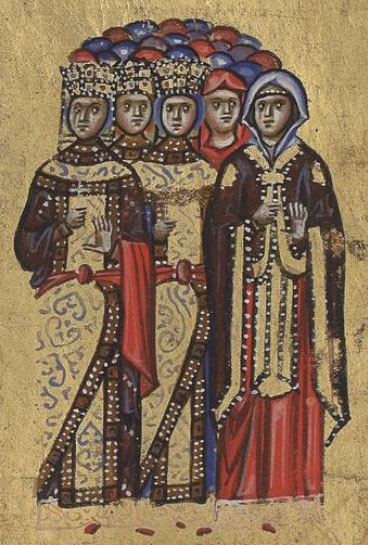 Eirene is described in poetry of the time as “mistress of the Muses and Muse Kalliope,” “lustrous child of Hermes,” and “sweet-singing Siren".
Eirene is described in poetry of the time as “mistress of the Muses and Muse Kalliope,” “lustrous child of Hermes,” and “sweet-singing Siren".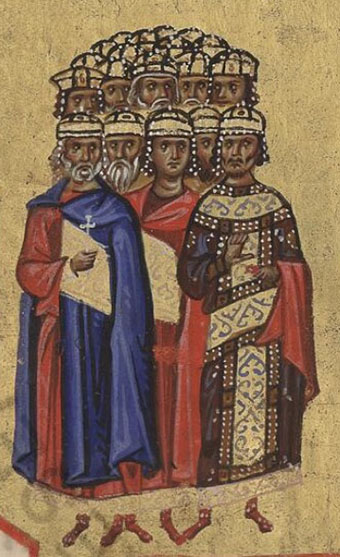
They contain six sermons on the apocryphal life of the Virgin Mary that were delivered by Iakovos of the Kokkinobaphou Monastery in Bithynia. It derives from the Protevangelion of James, a non-canonical book that was probably composed in the 2nd century. It was a very popular book, more than 150 Greek copies of the Protevangelion of James have survived from ancient times. It was translated into dozens of languages. Iakovos believed it should be incorporated in the Bible canon. Orthodox theologians were divided over the authenticity of it.
The purpose of the book of sermons was to give the reader examples from the life of Mary to use in daily life. The first and largest edition was done for Eirene, while the copy in Paris was made for the author ten years later in the same Imperial Constantinopolitan scriptorium and was a smaller size. It also contained an illustrated presentation page showing Iakovos being presented by St. John Chrysostom to Saint Gregory of Nyssa.
Several commentators on the manuscript have noted that there are 8 illustrations of Mary holding a book, which emphasizes the importance of female literacy and how important it was for women to study the scriptures.
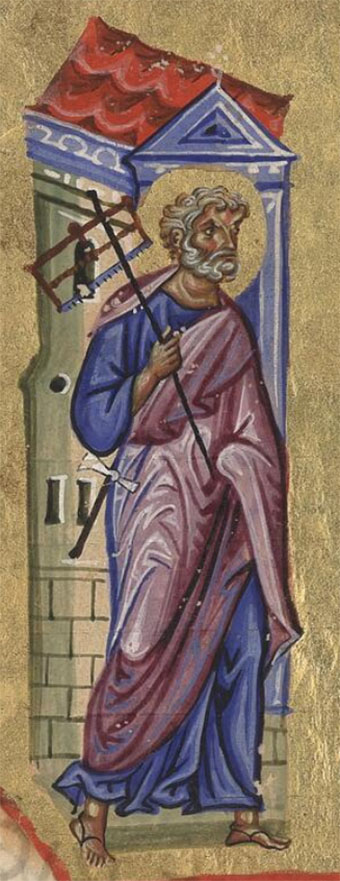 Above is an image of Saint Joseph carrying his carpenter tools, a plane and a two handled saw. There is an axe hanging from his belt. Carpenters roamed the streets of 12th century Constantinople seeking employment carrying their tools like this.
Above is an image of Saint Joseph carrying his carpenter tools, a plane and a two handled saw. There is an axe hanging from his belt. Carpenters roamed the streets of 12th century Constantinople seeking employment carrying their tools like this.
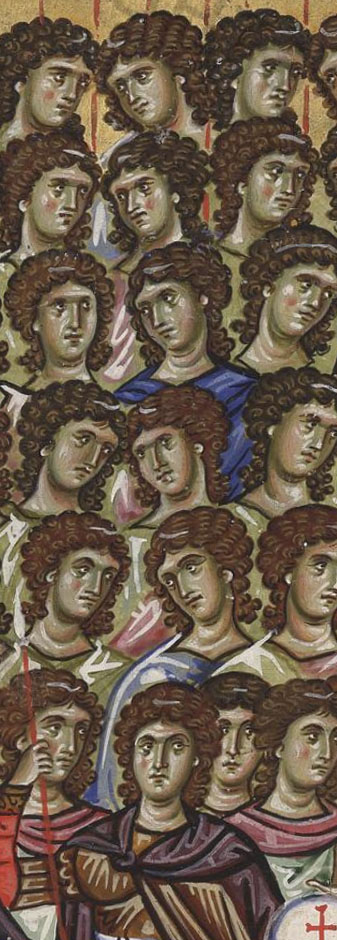

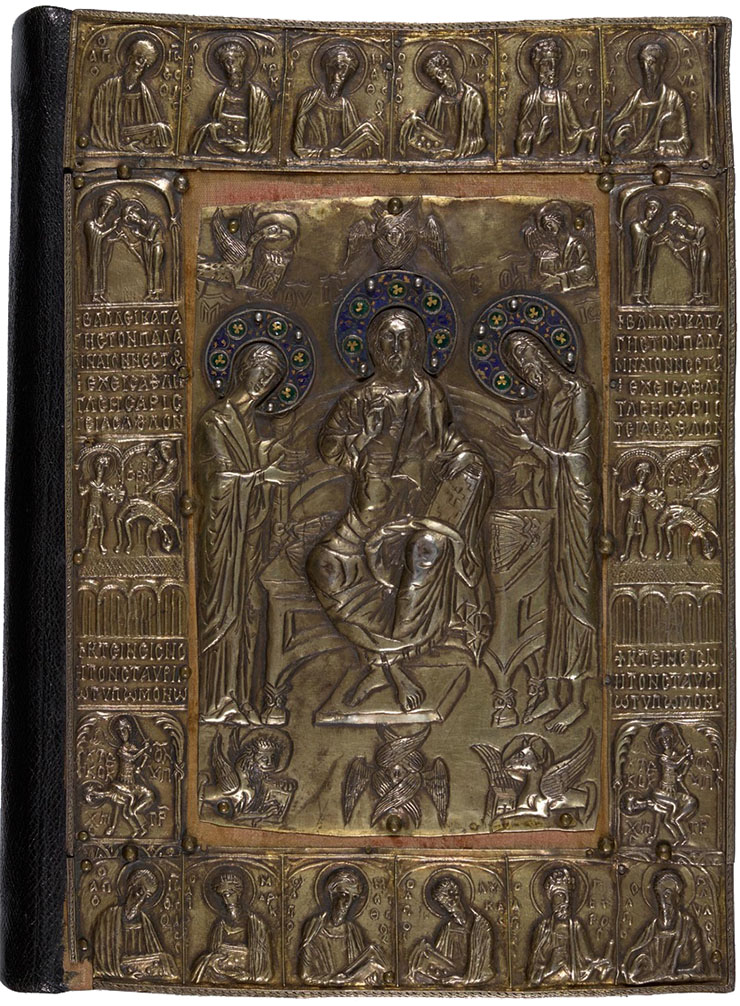
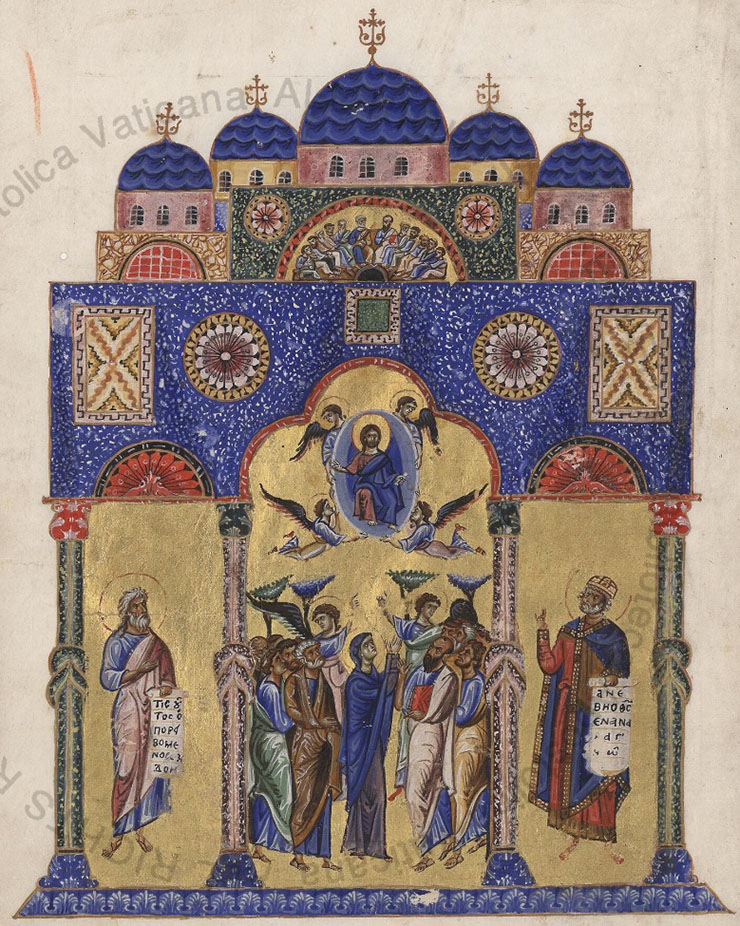 The Ascension
The Ascension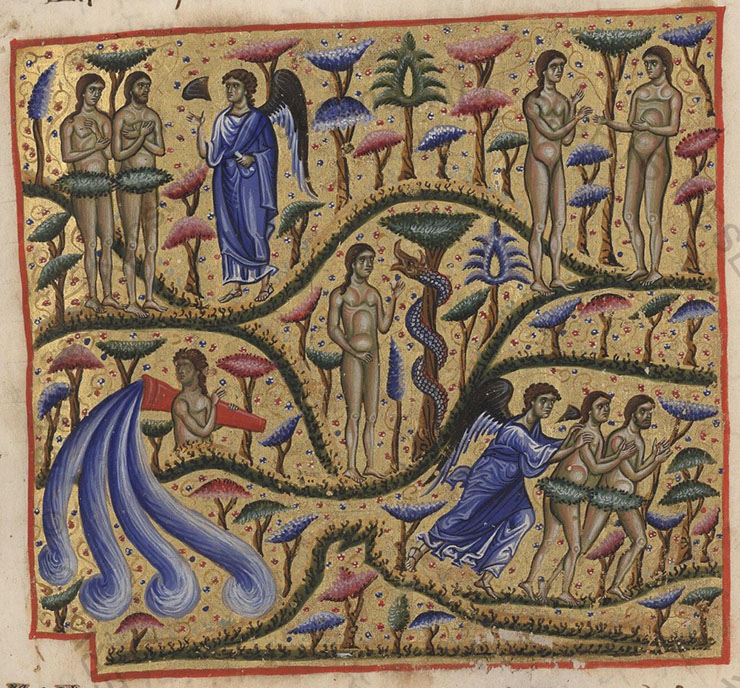 The Fall and Exile of Adam and Eve
The Fall and Exile of Adam and Eve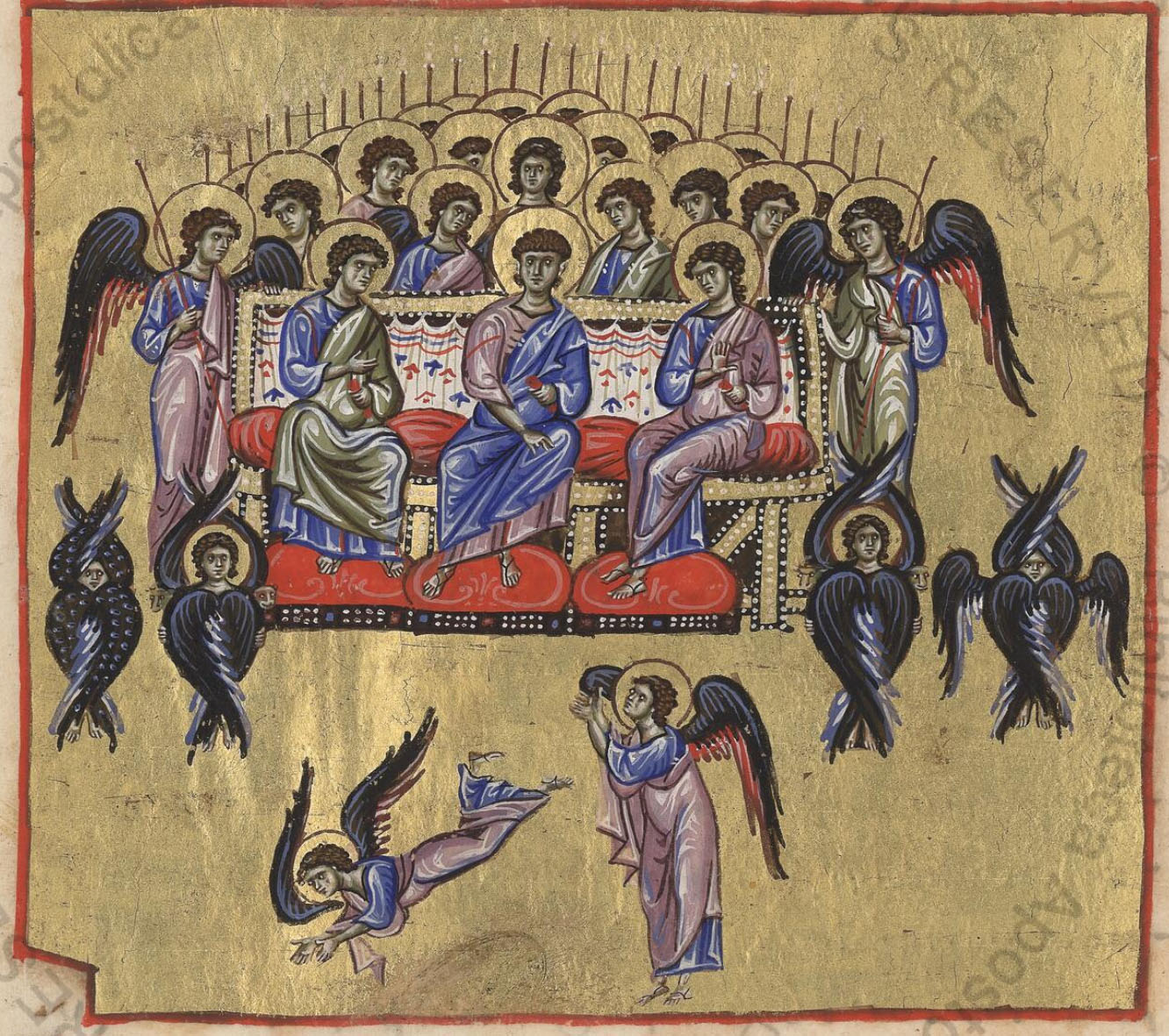
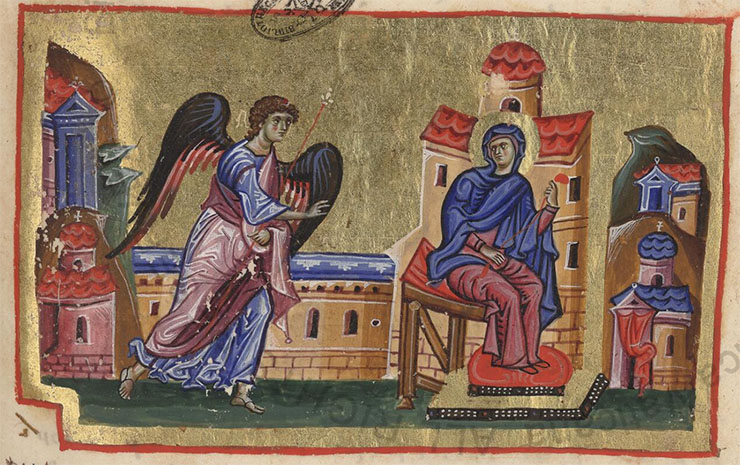
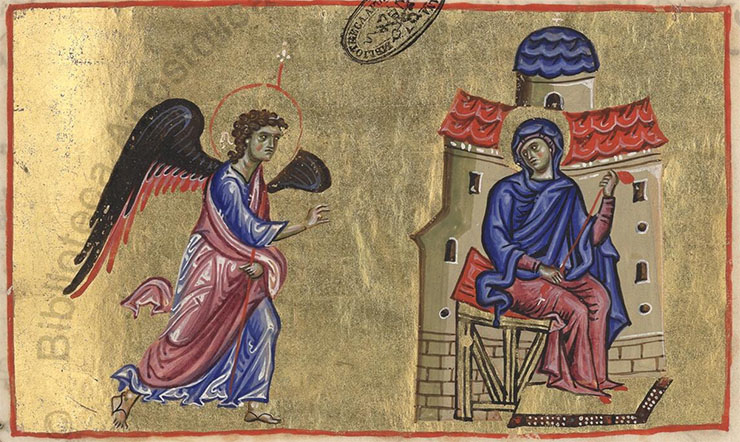
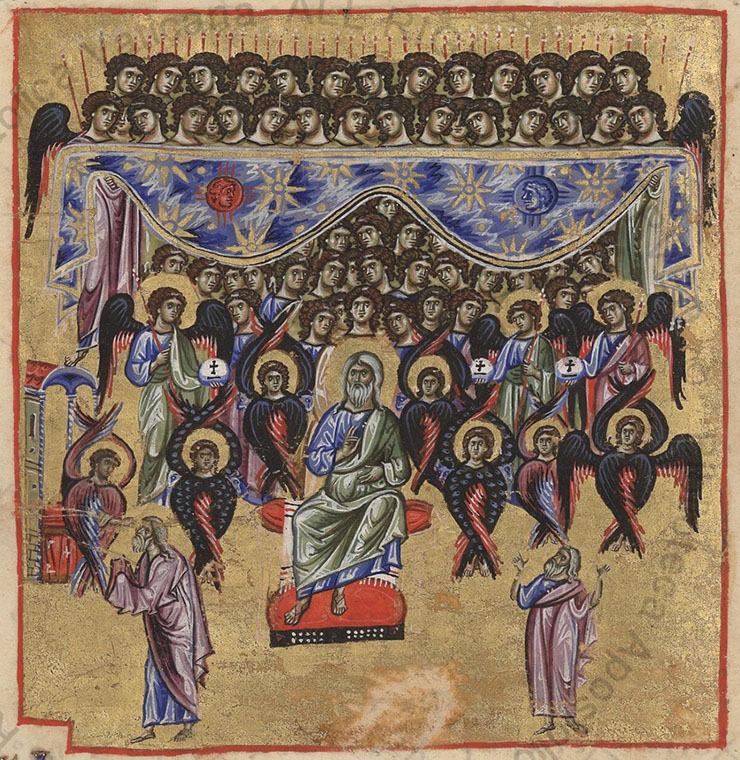
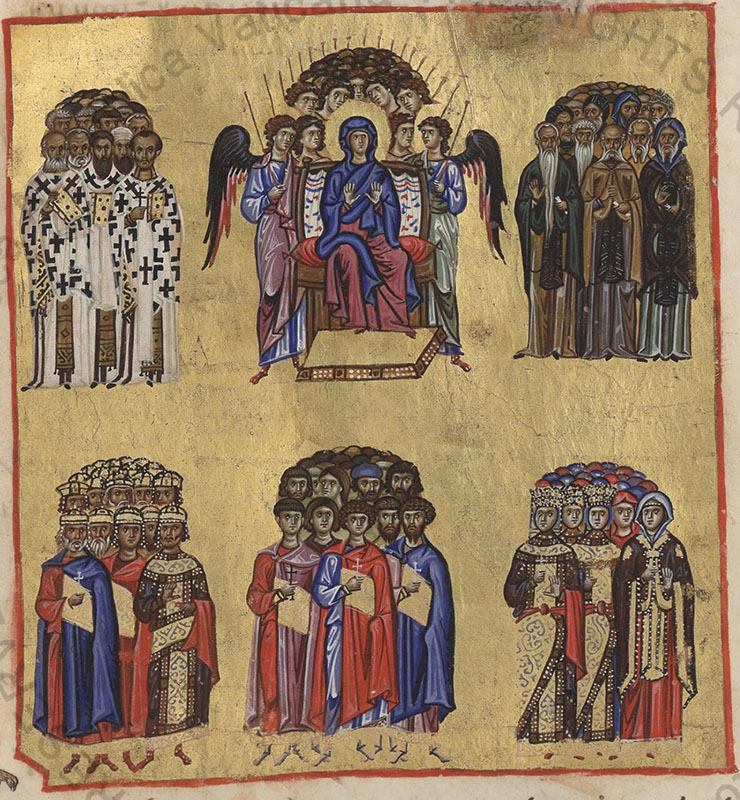
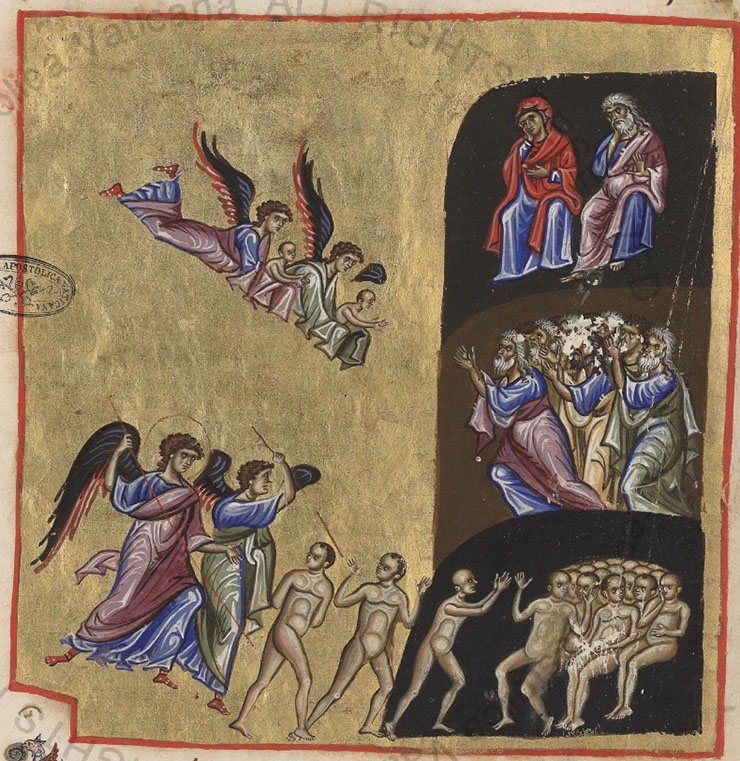
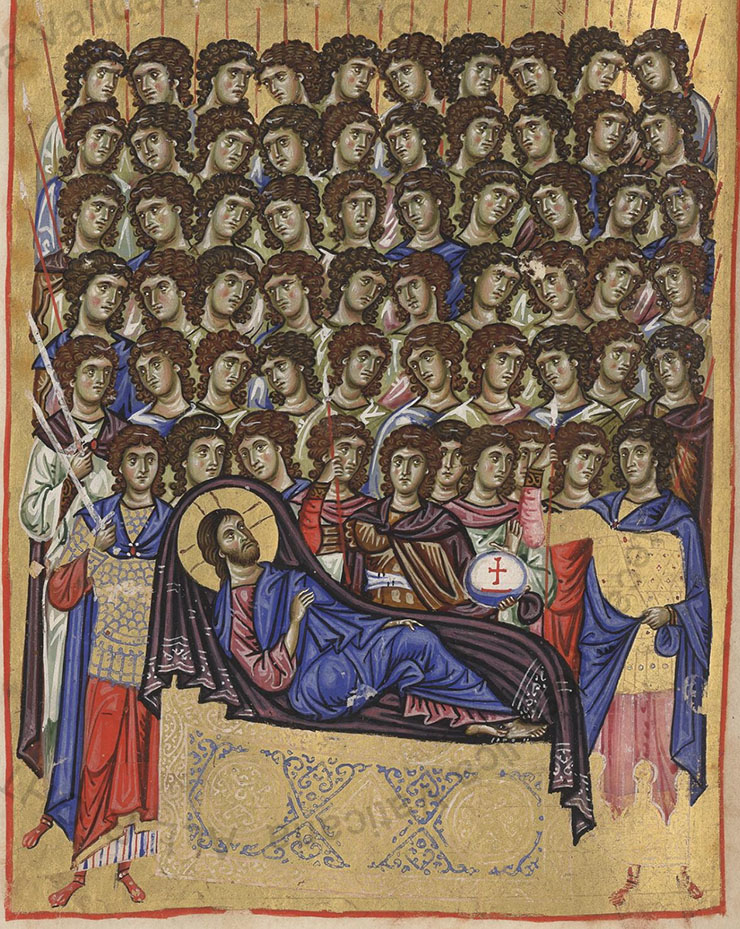

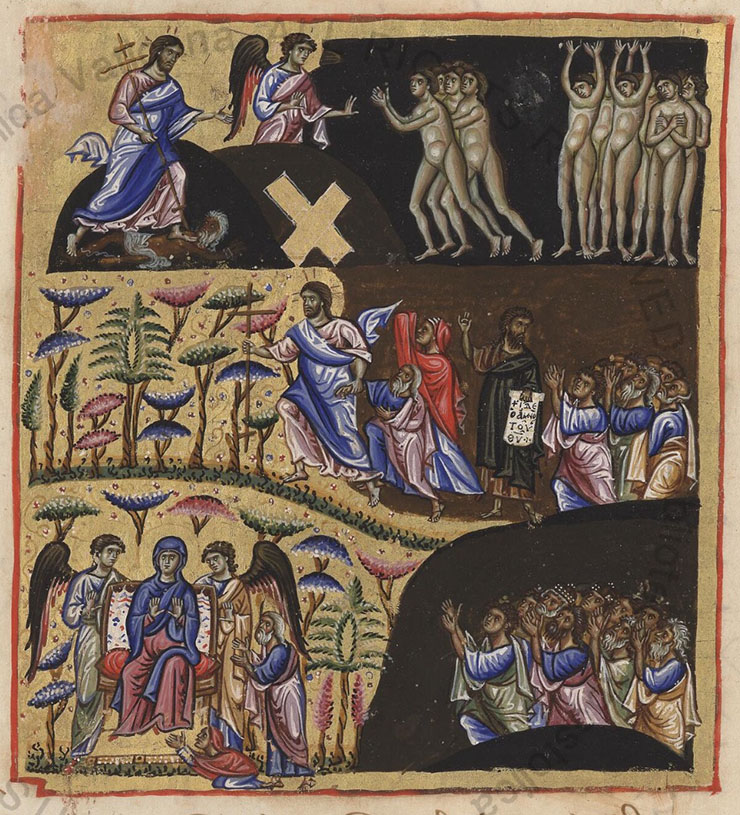
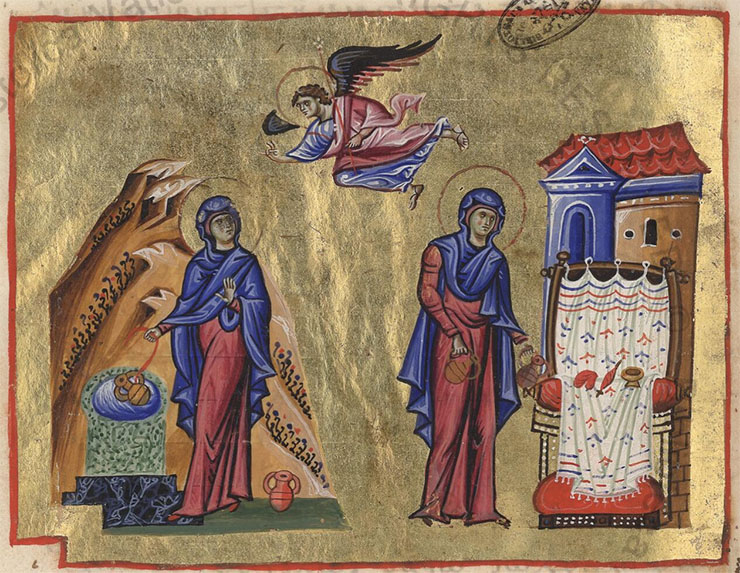
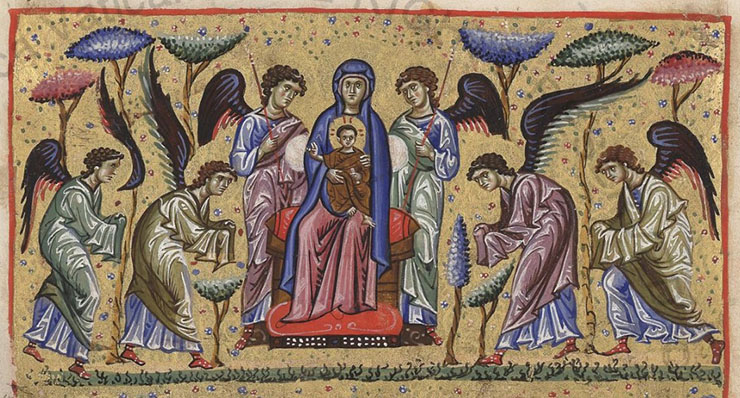
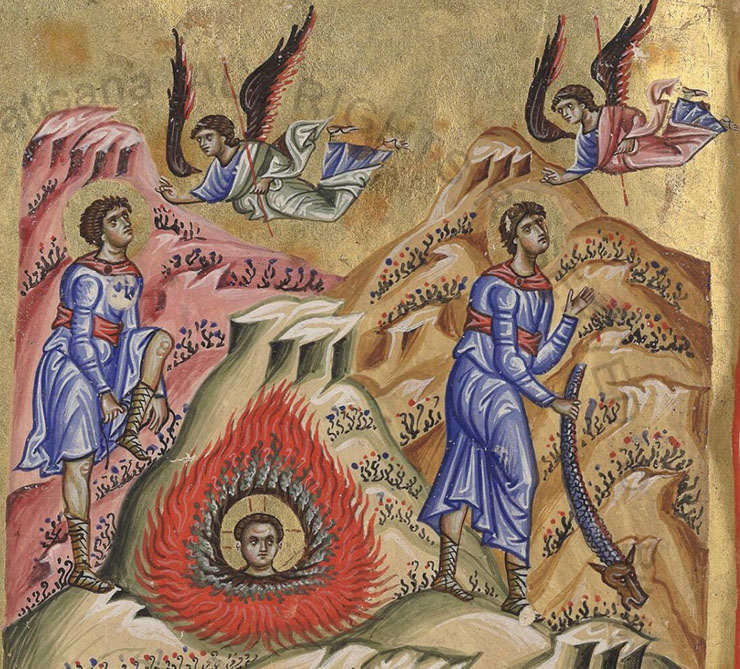 The Burning Bush
The Burning Bush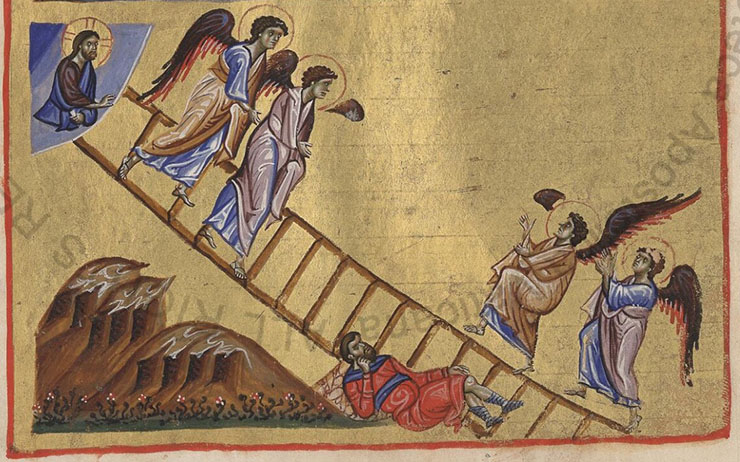 The Ladder of Heaven
The Ladder of Heaven



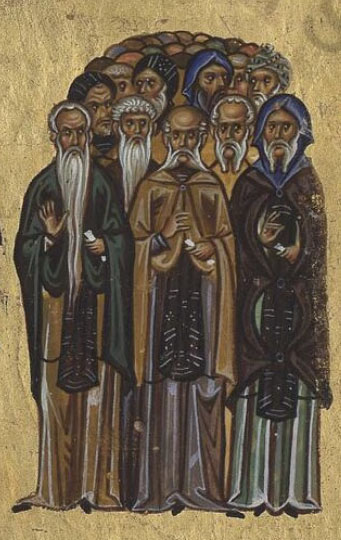
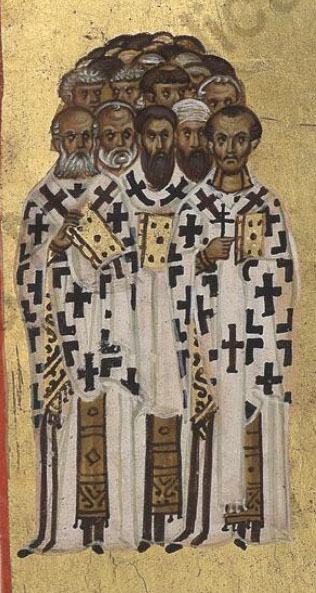 Below are illustrated initials from the manuscript.
Below are illustrated initials from the manuscript.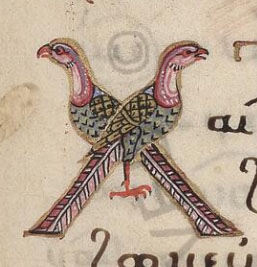
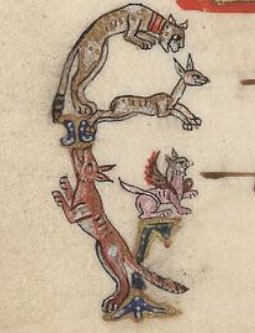
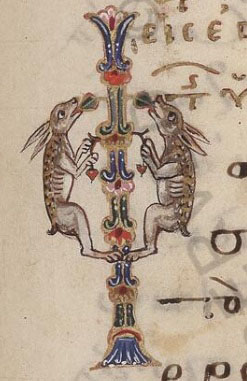
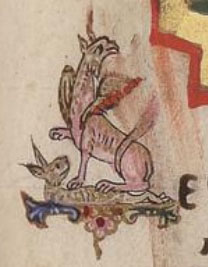
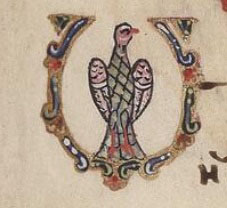 Designs like these can be seen in the mosaic decoration of the
Designs like these can be seen in the mosaic decoration of the 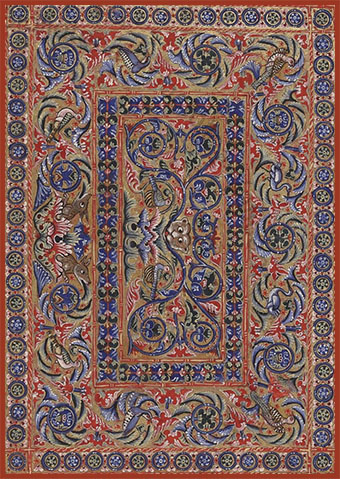
 click here for icons of christ
click here for icons of christ click here for icons of the theotokos
click here for icons of the theotokos click here for icons of angels
click here for icons of angels click here for icons of saints
click here for icons of saints








